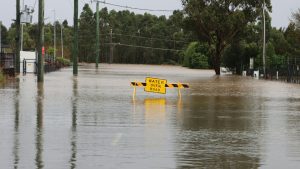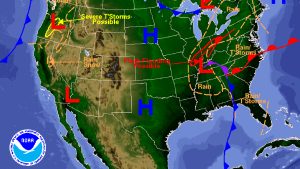Lightning and thunder are two of the most striking features of any thunderstorm. They occur almost simultaneously and are linked by powerful processes within the atmosphere. In this post, we’ll break down what causes lightning, how it creates thunder, and why you see the flash before you hear the boom.
What is Lightning?
Lightning is a sudden discharge of electricity that occurs during a thunderstorm. It happens when electrical charges build up and then rapidly equalize between clouds, the ground, or within a single cloud.
How Does It Form?
- Charge Separation
Inside a thunderstorm, rising water droplets collide with falling ice particles. These collisions create regions of positive and negative charges within the cloud. - Electrical Imbalance
The cloud becomes electrically charged, with positive charges near the top and negative charges near the bottom. The ground beneath the storm becomes positively charged. - Discharge Pathway
When the electrical potential becomes strong enough, the cloud releases the charge in a giant spark — lightning.
Types of Lightning
- Cloud-to-Ground (CG): The most familiar type, connecting the cloud to Earth.
- Intra-Cloud (IC): Occurs within a single cloud.
- Cloud-to-Cloud (CC): Jumps between two clouds.
- Bolt from the Blue: A rare CG lightning that travels outward from the side of a storm.
What is Thunder?
Thunder is the sound produced by lightning. When lightning rapidly heats the surrounding air (up to 30,000°C or 54,000°F), the air expands explosively. This rapid expansion creates a shockwave that travels through the atmosphere — that’s the sound we hear as thunder.
Why Do We See Lightning Before We Hear Thunder?
Light travels much faster than sound. You’ll see the flash of lightning almost instantly, but sound takes roughly five seconds to travel one mile. This delay allows you to estimate how far away a storm is — every five seconds between flash and boom equals one mile of distance.
Lightning Safety Tips
- Stay indoors and away from windows.
- Avoid water, electrical appliances, and plumbing during a storm.
- If you’re outside, avoid open fields, tall trees, and metal objects.
Final Thoughts
Lightning and thunder are incredible natural phenomena driven by powerful forces in the atmosphere. While beautiful, they also pose significant risks. By understanding the science behind them, you can stay safe and deepen your appreciation for the stormy sky.




